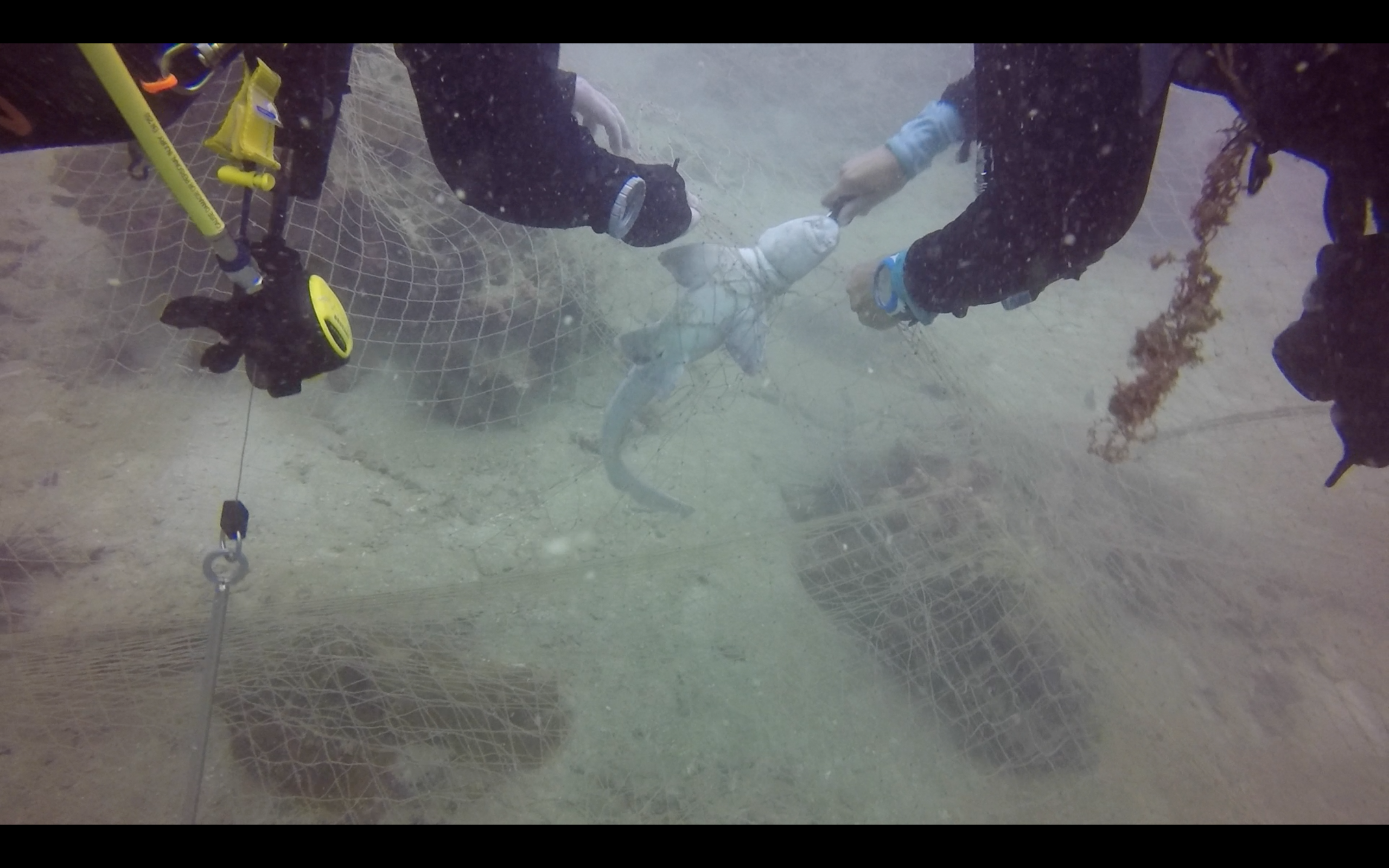On April 10, 2016, diving enthusiast Thanda Ko Gyi set off for her third visit to The Nursery – a dive site off the coast of Kawthaung, near an obscure islet called Sloop Rock in the Myeik Archipelago. She was excited.
When divers first arrived at the site a few years ago, they mistook the bamboo sharks in the area for juvenile nurse sharks. Hence the name. Few dive sites are more recognizable than The Nursery among Myanmar’s nascent diving community.
But when Thanda got into the water, she didn’t see the bustling bamboo shark community she expected. Instead, she saw the strewn corpses of the creatures she had come there to visit. She counted twelve dead bamboo sharks and several other dead or dying creatures, all ensnared in a nylon fishing net that blanketed the entire site.
“It was the worst dive ever,” she told Coconuts.

Myanmar’s underwater earthscape may be relatively untouched by tourism, but it is steadily becoming a trash receptacle for local fishers. In fact, these two circumstances might be related. Thanda said that while it is rare to find a single piece of rubbish during a dive in Australia, where tourism provides an incentive to protect dive sites, it is common to find instant noodle packages and batteries in Myanmar’s lawless waters.
Ghost nets are among the deadliest of underwater debris. Hundreds of kilometers of fishing nets are abandoned by humans in the ocean every year, and they can kill animals for decades before they disintegrate.

In an effort to prevent future deaths, Thanda and four other divers – three of whom were just visiting the area – went back down to The Nursery last month to remove the ghost net. The effort was supported by local diving businesses: Mergui Dive Adventures donated dive tanks and supplies, and Aquamarine Ecotourism donated the boat and the fuel.
It took them a few dives to find The Nursery, but they still found rubbish each time they went down. They picked up as much as they could.
When they got to The Nursery, they saw a ghost net covering about 200 square meters of the reef. Thanda said they were shocked at the size of it. It took them two hours and three dives to remove most of the net. They were unable to remove one five square meter section of the net, and it’s still down there.

Thanda, who is the environmental officer for the Myanmar Underwater Federation and a manta ray research volunteer for the Marine Megafauna Foundation, said Myanmar has a long way to go in protecting its marine environment. She said she has even heard the sound of dynamite exploding in the water, sett off by nearby fishers.

According to Flora and Fauna International, Myanmar has the lowest rate of marine protected areas in Southeast Asia and has no protected coral reefs. Furthermore, local fishers are often uneducated on the dangers of overfishing.

“We need to make sure fishermen stay away from reefs and mangroves. That’s where juvenile fish hang out,” Thanda said. Removing young fish from their habitats can cause populations to dwindle more rapidly.
While the legal system takes its time catching up to the needs of Myanmar’s marine ecosystem, Thanda said she hopes to plan more clean-up dives to prevent future destruction.
To get involved in the initiative, email tkogyi@marinemegafauna.org.





Reader Interactions